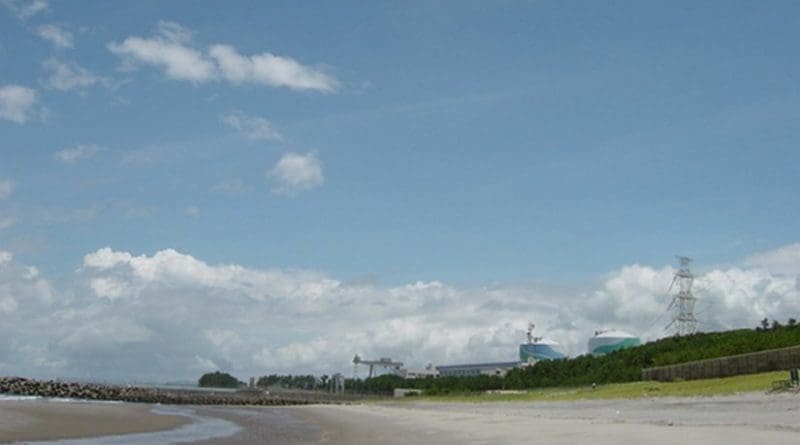Japan’s Nuclear Energy Policy And Its Uncertain Future – Analysis
By Observer Research Foundation
By K.V. Kesavan*
After a long interval of about four and a half years, the votaries of nuclear energy in Japan have a sigh of relief as the first nuclear reactor resumed its operations in Sendai in the Kagoshima Prefecture of Kyushu, Japan. This has obviously raised some crucial questions regarding the role of civil nuclear energy in the coming years. Is it going to herald a new era in Japan? Will nuclear power be restored to its earlier position of importance?
These questions are very pertinent in view of the fact that the Fukushima triple tragedy of March 2011 had brought the rapid growth of nuclear energy to a virtual halt and created an atmosphere of hostility to nuclear energy. When the Sendai-I reactor was put online on 11 August, there was a nationwide protest which seriously questioned the wisdom of reactivating the reactors. The resumption of the Sendai reactor could not have taken place under more unfavourable circumstances. It indeed coincided with the serious parliamentary deliberations on Prime Minister Shinzo Abe’s controversial legislative bills on national security. Further, it also coincided almost with the much expected and highly scrutinised Abe’s statement on the 70th anniversary of the end of the Second World War. Thirdly, it also happened when the popularity of Mr Abe was on a sharply declining curve. Opinion surveys taken in the last week of July recorded Abe’s popularity going below 45% for the first time in recent years.
Those who have followed closely the development of Japan’s nuclear energy programmes know that despite tremendous opposition, successive Japanese governments under the Liberal Democratic party considered the nuclear power as an integral part of the long term energy strategies of the country. The rapid growth of Japanese economy rested on the stable flow of energy and the nuclear power made a substantial contribution to ensure that. At the time of the Fukushima tragedy, nuclear energy accounted for about 30% of the country’s total energy requirements. Unable to cope with the challenge posed by the Fukushima crisis, the then Japanese government under the Democratic Party of Japan (DPJ) decided to opt for the total elimination of nuclear power from the national energy strategy. DPJ’s preference for a zero nuclear option was in keeping with the then prevailing mood of the people who seriously questioned the wisdom of continuing to depend on the nuclear energy as a major power source. Very soon after the Fukushima crisis, nuclear reactors started closing down one by one either due to technical deficiencies or due to regular inspections. By the middle of 2013, Japan literally went ‘non-nuclear’ in the sense that all 50 reactors were in a state of idleness.
In April 2014, the Abe government announced its new national energy policy – almost 15 months after assuming office. During 2012-13, following the Fukushima crisis, the government realised that in the absence of the nuclear energy which had accounted for about 30% of the total energy, the country had to pay to the extent of Y 3.6 trillion a year for importing oil and gas from abroad. This naturally imposed a heavy burden on Japanese taxpayers who had to pay 30-40% more for consumption of power. Taking into account this compelling reason, the new Basic Energy Policy of the Abe government defined the nuclear energy as “a key base load electricity source” and declared that the operations of the nuclear reactors would be resumed upon clearance by the newly created Nuclear Regulation Agency (NRA) with its tough tests.
The new policy has not fixed the shares of different energy sources though it has not however closed its options for building new reactors. But with almost all nuclear reactors offline, the influential nuclear power industry is worried about the long period of time that the NRA may take to complete its screenings of the reactors. Many are concerned that if the NRA applies its 40-year criterion to the reactors, many of them will have to be scrapped soon and replaced by new ones. And, building new reactors is fraught with a variety of financial and environmental challenges.
Within the next few weeks, Sendai-II reactor will also resume its operations. In addition, more than 20 reactors are now waiting to restart, but they still face many obstacles. The new standards set up by the NRA require stricter safeguards against tsunamis, earthquakes and other disasters. Moreover, it is also necessary for the reactor owners to get the approval of the local prefectural and municipal authorities. Takahama 3 and 4 reactors of the Kansai Electricals in the Fukui Prefecture are locked up in litigation and the power plant in the Ehime Prefecture in Shikoku is faced with delays due to the long drawn process of obtaining local prefectural and municipal approvals. It is therefore somewhat frustrating for power companies to chalk out a clear plan for reactivating the reactors.
In the meantime, the government desires to have nuclear energy account for 20-22% of the country’s total electricity supply by 2030, and in pursuance of this, it has also modified its subsidy policy to exert more pressure on local prefectures and municipalities to activate the idle reactors. It is reported that starting from 2016, the Ministry of Economy, Trade and Industry (METI) will revise the quantum of its subsidies based on the actual operational rate of the nuclear plants. This new policy will deprive many prefectures and municipalities with idle reactors of enormous amounts of subsidies and force them to take speedy measures to reactivate the nuclear plants. How successfully they will manage the strict regulations of the NSA and the local sentiments will be seen in the coming weeks and months.
*Prof K.V. Kesavan is a Distinguished Fellow at Observer Research Foundation, Delhi

